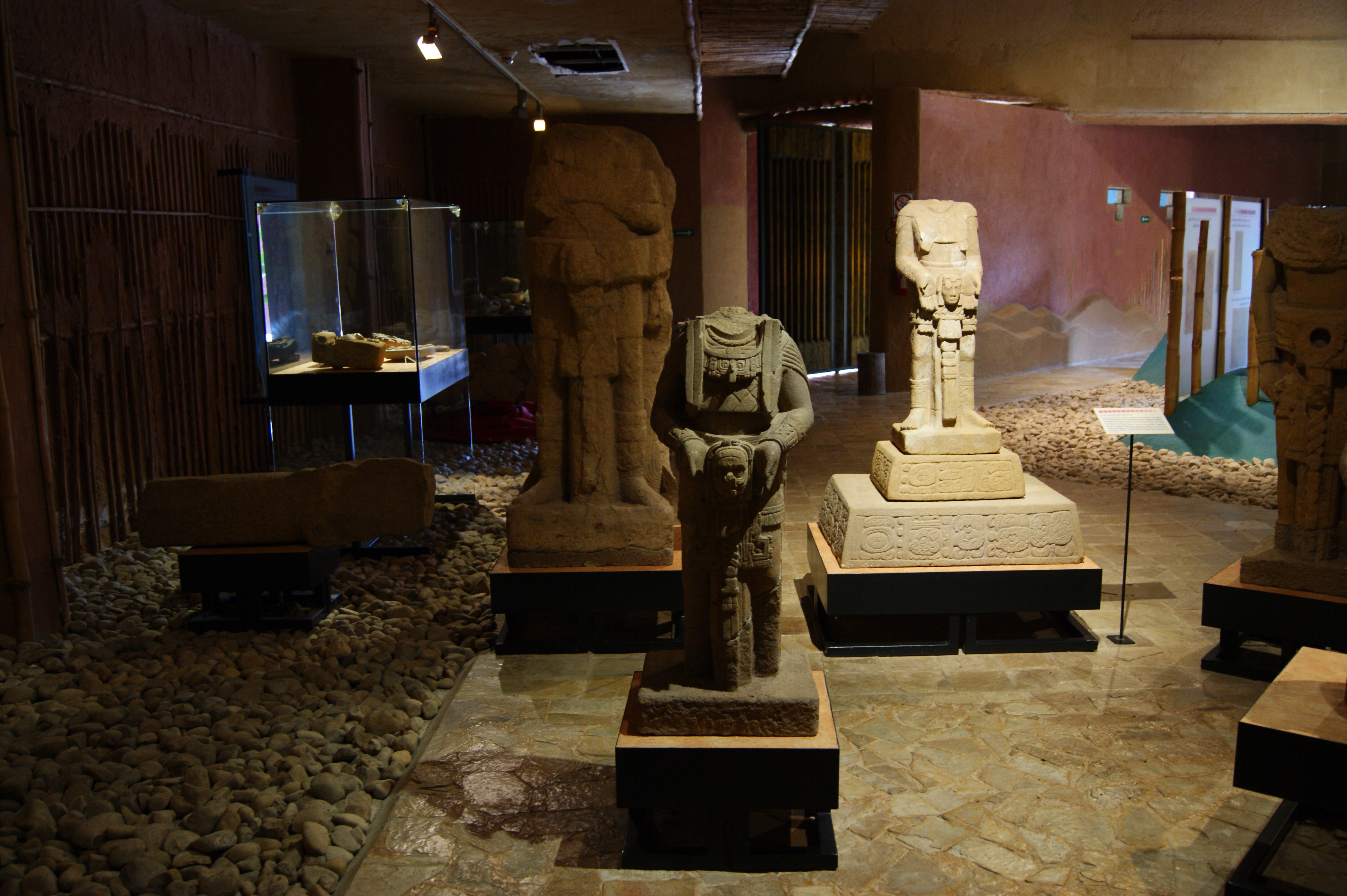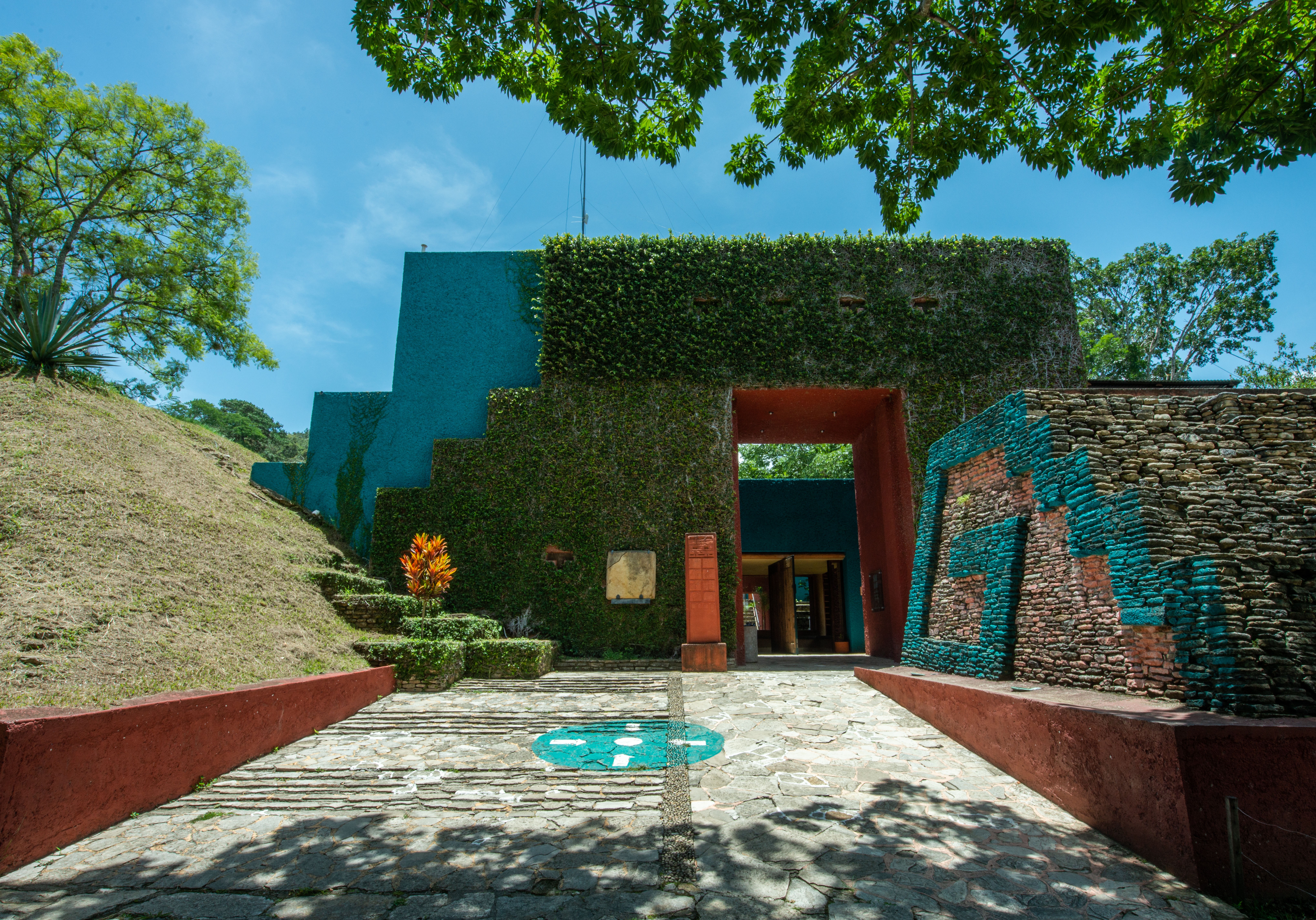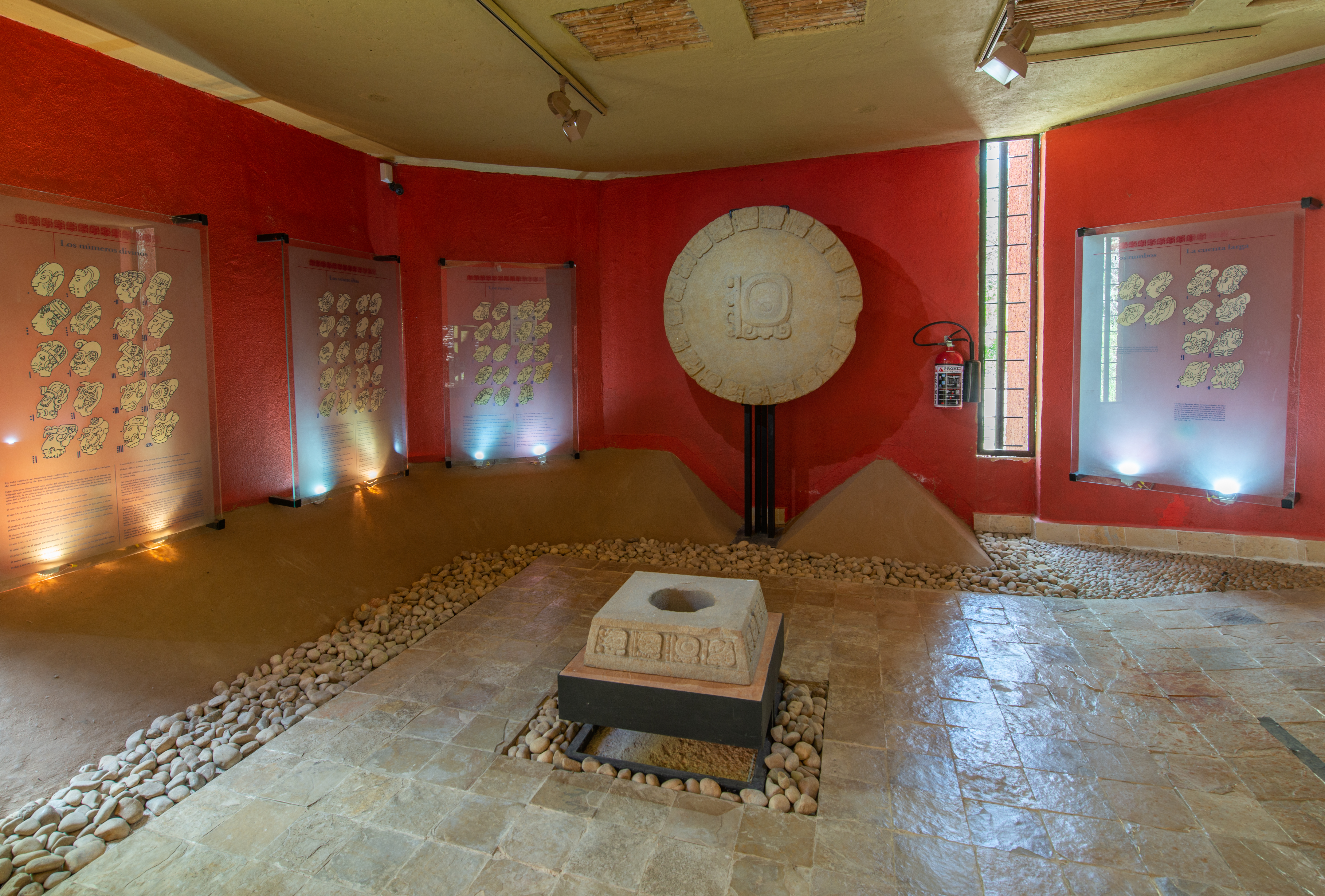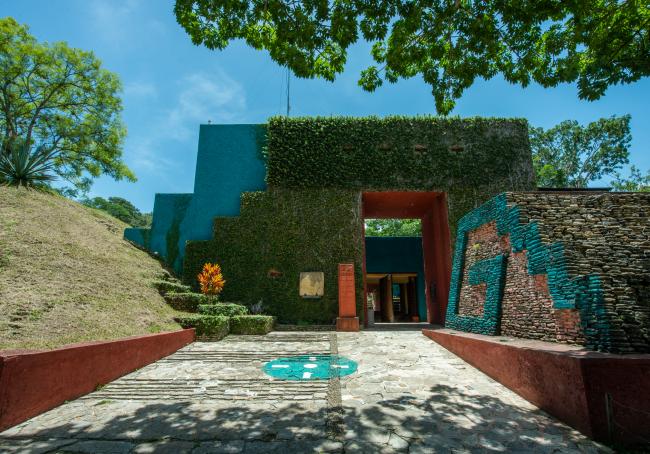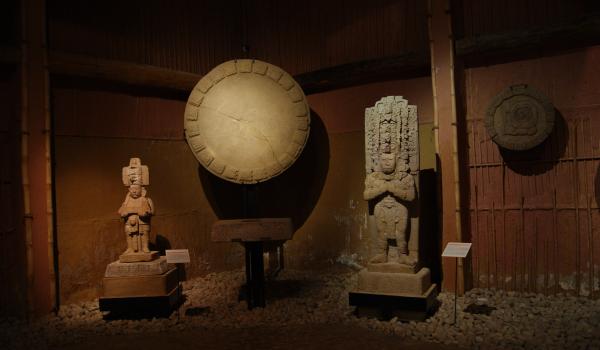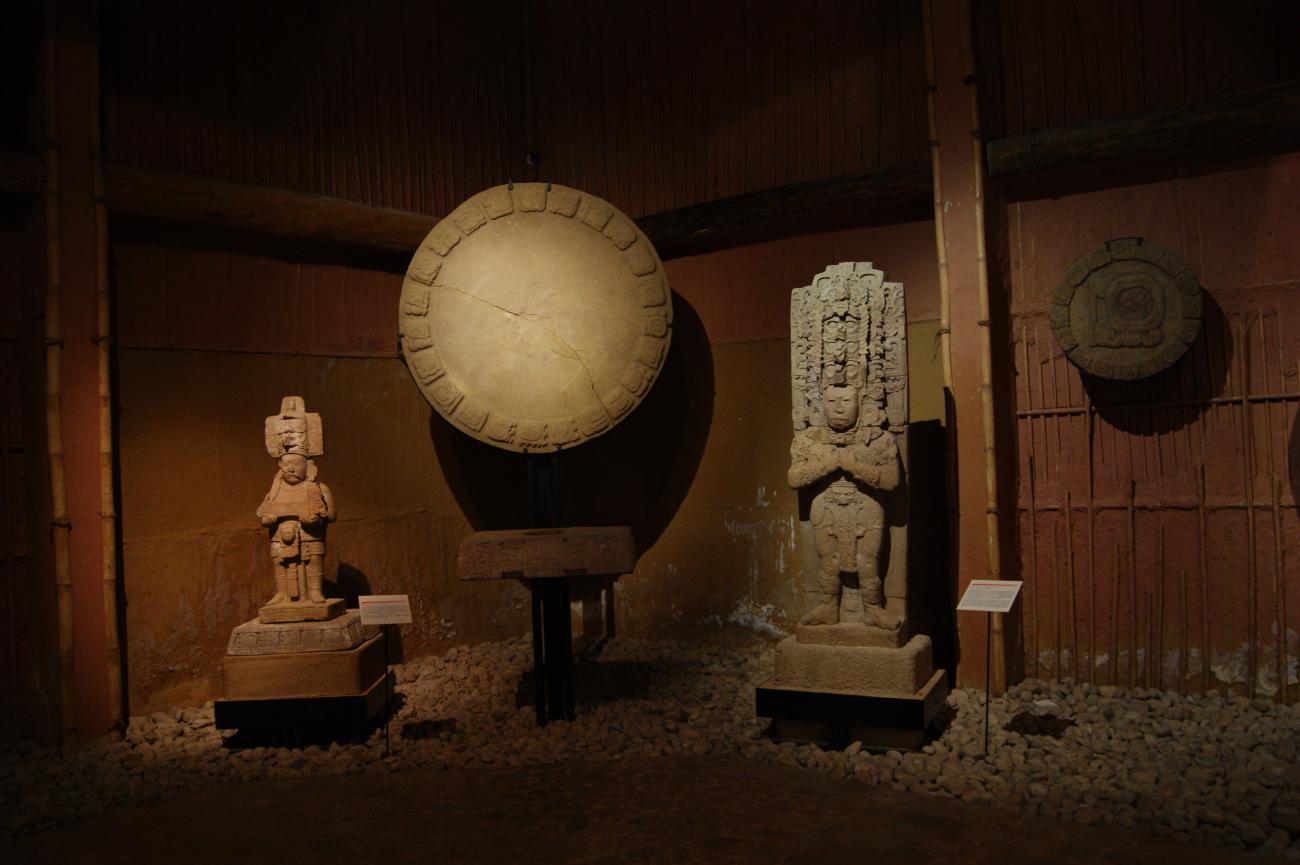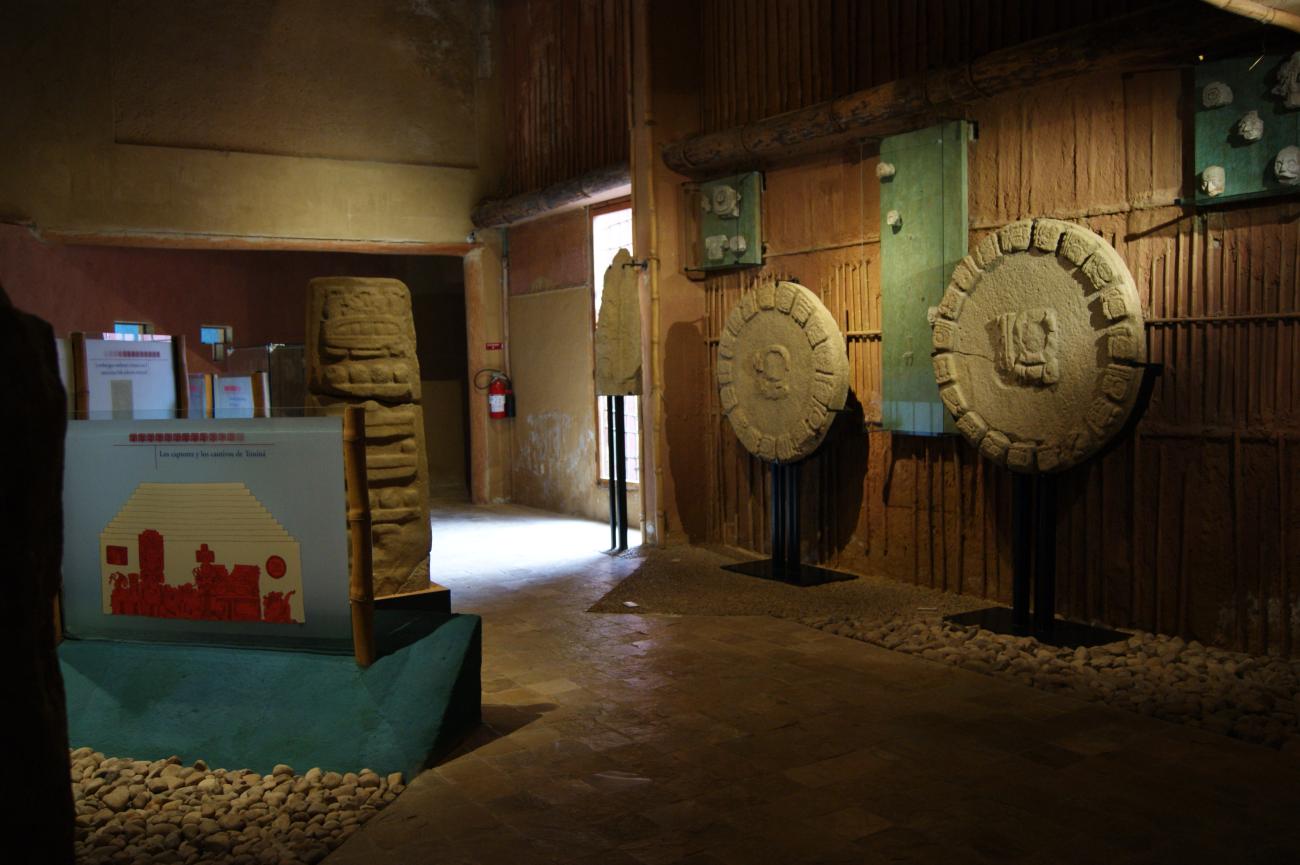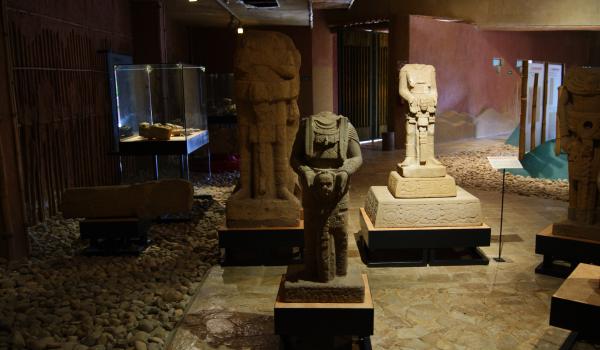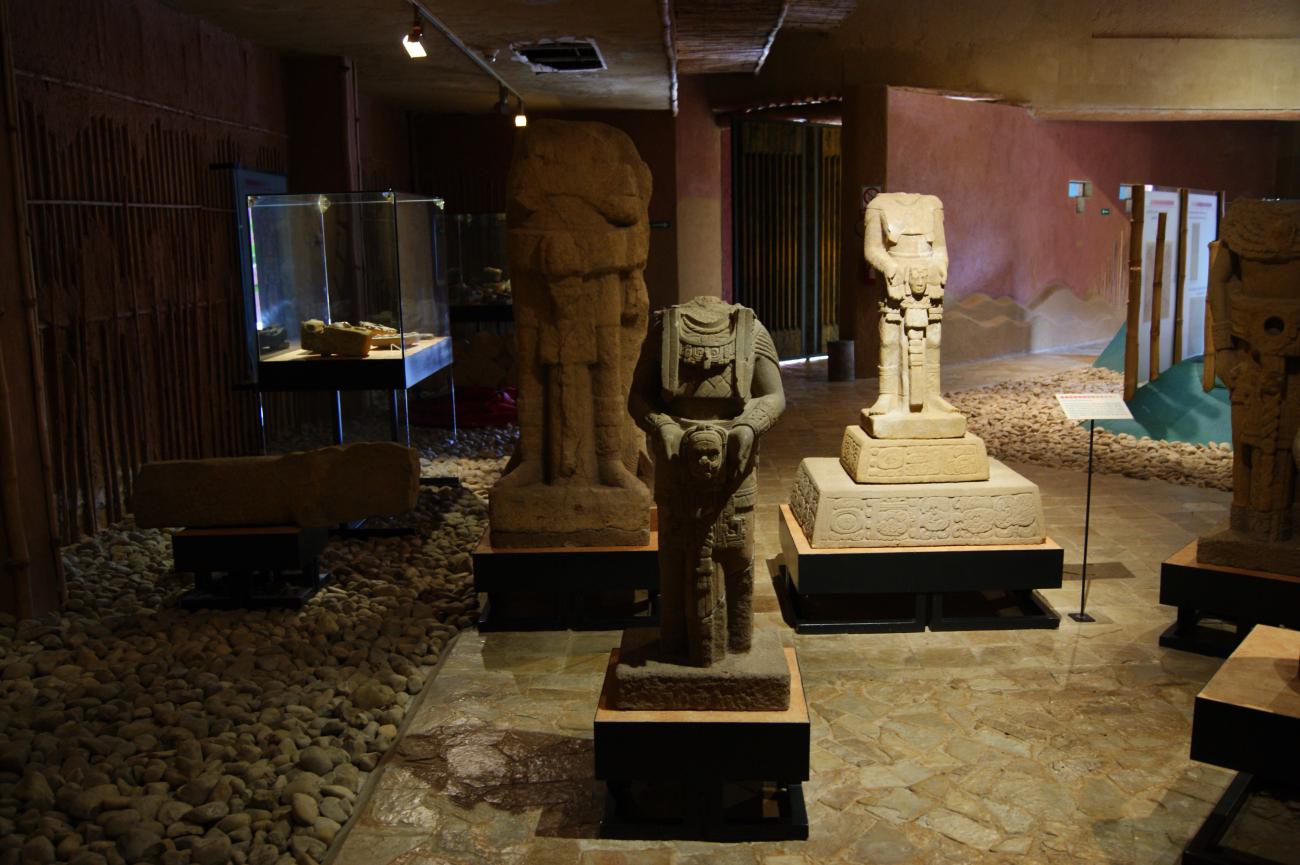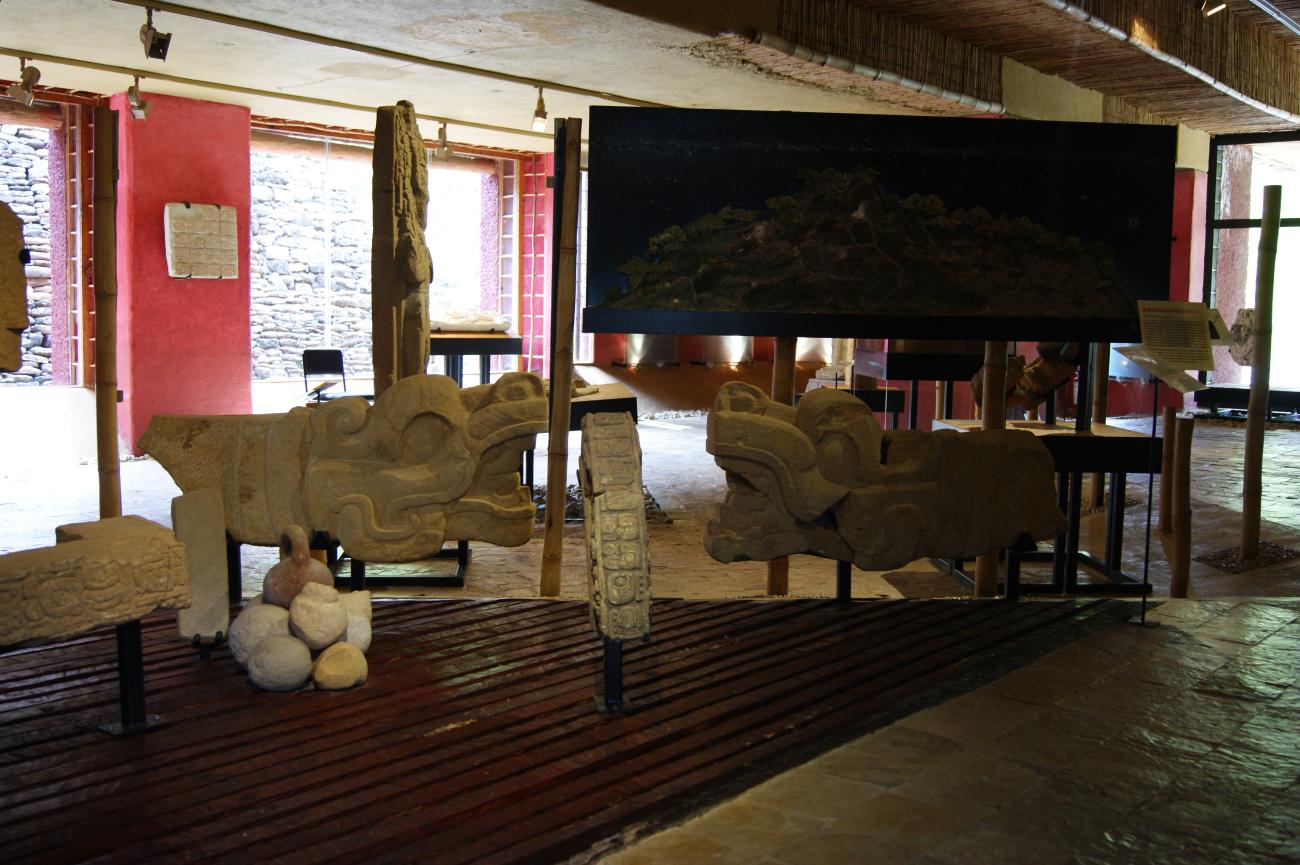The Tonina Site Museum’s extensive archeological collection gives insight into the political and social life of the people, as well as everyday living. The display of artefacts from the Mayan settlement relate to both history and mythology, with a focus on the sacred text of the Popol Vuh. The aim is to promote awareness of the culture surrounding the Mayan creation myth. The museum was opened to the public in July 2000 by Ernesto Zedillo Ponce de León, who was president at the time.
A group of French archeologists, biologists, botanists and other similar specialists began work on the Tonina archeological site in 1972 and their main effort was to make cuts into the structure of what is now the main pyramid. In 1982 Juan Yadeun Angulo of the INAH was tasked with beginning excavation work, and he succeeded in recovering many high-value finds over several year’s hard work. Two warehouses were built in 1985, one on the location of the current archeological site entrance, barely 260 feet from the ballcourt, while the other was earmarked as the site museum.
The museum space quickly became too small to receive the number of finds which kept arriving from the excavations, and in 1998 it became evident that a new building was needed. Zacatecas-born architect José Carlos Lozano was in charge of the design and construction, supported by the archeologist Yadeun Angulo, and the result of their partnership was to incorporate the majority of the elements of Mayan architecture into the museum design. One example is the “T” shaped windows in the building, a symbol representing Ik, the god of the wind. The building not only stores a vast collection of finds from over 30 years of excavations, but it is also a research center serving the community in general, especially through education.
The museum is in the middle of a rectangular esplanade, built to record the ancient Mesoamerican myth of the creation of the universe. The building has two exhibition galleries with material found on the archeological site, an auditorium for approximately 100 people screening a documentary about Tonina, an education services area and two office areas.
The gallery displays give visitors a sense of being transported back in time: going inside a pyramid, looking at its stepped roof made from reeds or wild cane, wood and bamboo, with wall decorations from reeds and clay surfacing, in addition to being able to view the exquisite cultural riches from the museum collections.
The museum entrance is located on the south side, where there is a stela designed by the archeologist Juan Yadeun Angulo, with the Mayan date 12 baktun, 19 katun, 7 tun, 0 uinal, 0 kin, which corresponds to July 13, 2000, the date the museum was opened. The archeological material on display is original, and all found at the site. The first gallery provides a representation of the underworld, which is why it is located on the lower level, and it is necessary to ascend 13 steps to reach the next gallery, where visitors can see offerings, sculptures of governors and commemorative discs with carved glyphs dedicated to the world above, to life and to the governors.





